HarmonyOS
Huawei officially launched HarmonyOS Connect Series 7 Courses
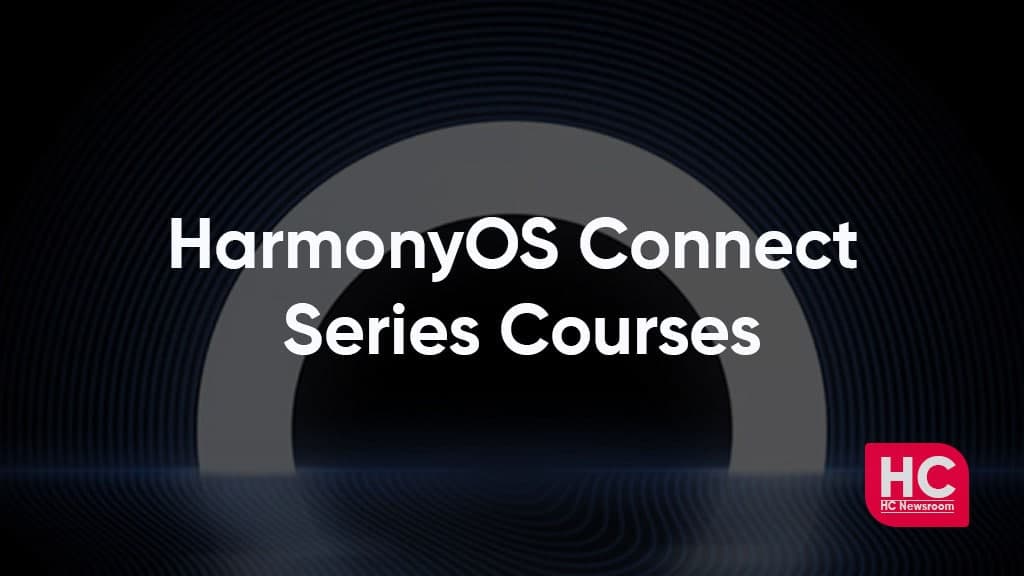
Huawei is making efforts to make the HarmonyOS ecosystem powerful, which is designed for the era of the Internet of Everything. Recently, Huawei has officially launched the HarmonyOS Connect Series Courses to help the developers.
According to the information, Huawei HarmonyOS Connect Series Courses included a total of 7-courses that assist the developers to rapidly improve the efficiency of HarmonyOS Connect Ecosystem product development and certification.
Also, the courses teach the HarmonyOS developers to build full scenarios smart life products and help third-party companies as well as partners to achieve business win-win. So, the seven HarmonyOS Connect Series Courses includes:
- Use of the Device Partner Platform
- Development Tools
- Full Solutions
- UX Design
- Device Development
- App Development
- Testing Certification
Furthermore, the various developers still have several questions related to HarmonyOS development, certification, DevECo Studio, and more. In order to clear doubts and provide answers to these questions, Huawei has arranged the Video Class on the Device Partner platform and especially launched the “HarmonyOS Connect Series Class”. [Link]

Course Detail:
Use of the Device Partner Platform
Huawei’s Intelligent Hardware Partner Platform (Device Partner Platform, hereinafter referred to as the DP Platform) is Huawei’s open platform for intelligent hardware ecosystem partners and provides one-stop service.
The course “Device Partner Service Platform User Guide” introduces the business process of the DP platform in detail, and also explains in detail how partners should fill in the relevant product information when applying.
This course has been launched for 3 class hours, and each class hour is 5-10 minutes. Through the study of this course, developers can complete business operations faster and more accurately, and can also access products faster and realize the commercial value of products as soon as possible.
Development Tools
The course “Full Interpretation of HarmonyOS Connect Development Tools” comprehensively explains how to build the DevEco Device Tool environment from scratch in the Windows system and Linux system environment. Based on the DevEco Device Tool, one-stop rapid development, debugging, and tuning allow you to fully understand the development tool DevEco Device Tool.
This set of courses has been launched for 14 class hours, and each class hour is about 10 minutes. It is worth mentioning that this course is not only full of professionalism but also has operability – teaching you hand-in-hand, just like face-to-face teaching with great skills. Don’t hurry and get the opportunity!
Full Solutions
The course “Full Interpretation of HarmonyOS Connect Solutions” introduces the overall content of the HarmonyOS Connect service package, including basic services, enhanced services and applications, pre-integrated full-stack solutions, and a one-stop integrated development environment. With the help of the full life cycle solution learning and service platform, you can quickly and cost-effectively develop a product with the experience of the HarmonyOS Connect Super Device.
This course has been launched for 3 class hours, and each class hour is about 10 minutes. The solution is also the link that partners are most likely to encounter problems in the process of accessing HarmonyOS Connect. Learning in advance can help you avoid unnecessary mistakes and save a lot of time.
UX Design
The course “Full Interpretation of HarmonyOS Connect UX Design” is a step-by-step course based on ecological thinking, which interprets HarmonyOS Connect UX design from multiple levels of consumer experience, partner experience, and developer experience, and helps developers understand Super Device from different dimensions such as applications, devices, and ecology.
Experience framework, build a consistent full-scene system architecture, and an integrated 1+8+N full-scene experience with integrated software and hardware interoperability.
This course has been launched for 6 class hours, and each class hour is about 12 minutes~ This course can help developers better understand the HarmonyOS Connect UX design standards and specifications, fully understand the course content, and help you work more smoothly in UX design!
Device Development
Develop zero foundation? Fear not, the course starts with the basic concepts and will lead you to the door of HarmonyOS Connect device development! The course “Full Interpretation of HarmonyOS Connect UX Device Development” introduces the overview of OpenHarmony, explains the compilation tools and compilation environment for lightweight and small systems, and focuses on how to introduce the developed functional modules into system compilation. The relationship between product solutions and chip solutions.
This course has been launched for 5 class hours, each class hour is about 9 minutes. I believe that after watching the video, you can easily solve the problem of equipment development.
App Development
The “Full Interpretation of HarmonyOS Connect Application Development” course focuses on the access preparations that need to be performed during the development of atomized services, introduces how the HarmonyOS Connect application introduces Huawei ID capabilities, and the business flow of account capabilities in the project.
This course has been launched for 7 class hours, and each class hour is about 10 minutes~ This course introduces the basic application knowledge such as Ability, FA, and PA in the HarmonyOS application in detail. Don’t worry about the situation of “eyes learn, but hands fail”!
Testing Certification
The course “Overall Introduction of HarmonyOS Connect Device Certification” introduces the equipment certification and certification process of HarmonyOS Connect. The purpose is to help partners quickly understand the whole process of the HarmonyOS Connect certification process and smoothly complete the self-testing process, so as to quickly obtain the HarmonyOS Connect certification certificate and jointly develop “business ambitions”!
This course has been launched for 2 class hours, each class hour is less than 10 minutes ~ Partners who do not understand the certification process can get the answer after reading this course.
(Source: ithome)
HarmonyOS
TAILG launched new scooter with HarmonyOS
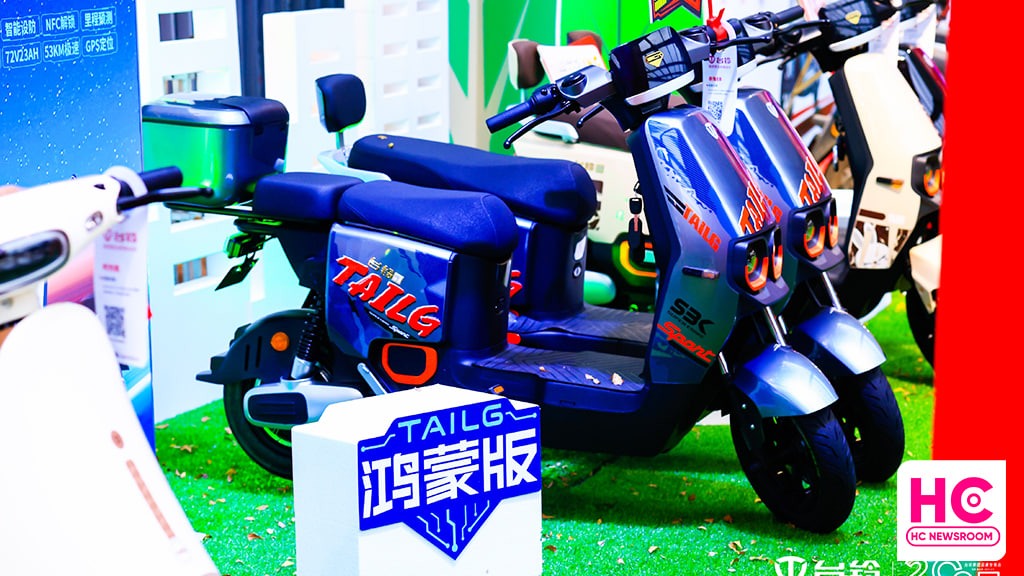
TAILG has launched a brand new electric scooter, which is powered by the HarmonyOS operating system and an all-around stylish look to provide a better experience for consumers.
It has a custom-made avant-garde handlebar, as well as an exclusive smart touch screen, which can display various driving data of the vehicle in real-time. It also equips with a variety of smart unlocking features, including one-key ignition.
The latest TAILG brings HarmonyOS features such as APP control, NFC unlocking, mileage prediction, smart fortification, and vehicle inspection. The TAILG HarmonyOS electric scooter packs a 72V23AH graphene battery, a 1000W cloud-powered motor, and a GPS positioning system.
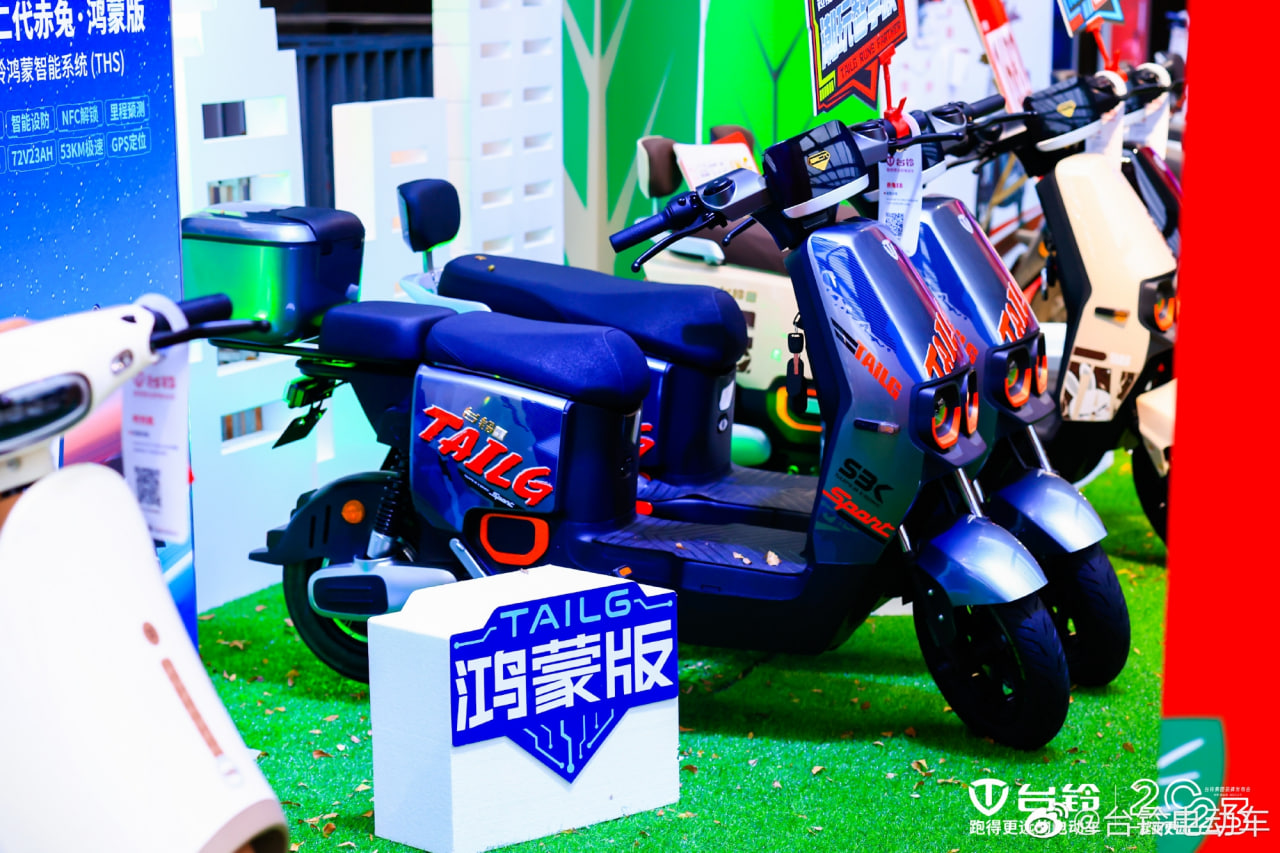
Looking at the price segment, the TAILG HarmonyOS scooter starts at 3899 yuan, and the high-end version is priced at 4588 yuan. This new electric scooter will be sold in offline stores across China.
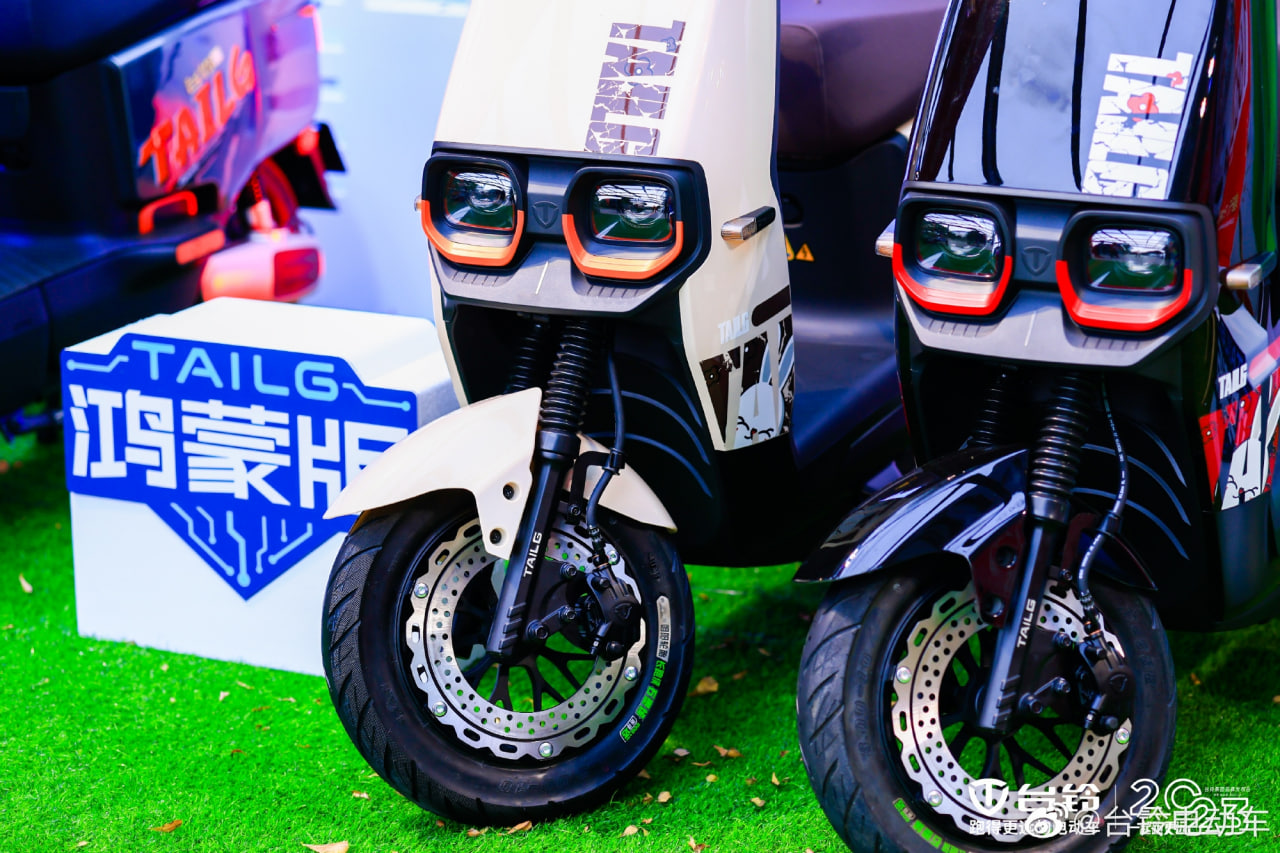
Last year in August, TAILG and Huawei announced cooperation to upgrade electric vehicles, the two companies will establish a joint innovation laboratory to conduct research on IoT and other technologies. This will also allow both firms to achieve technological advantages.
Established in 2004, TAILG is an enterprise specializing in R&D, manufacturing, sale, and service of new energy electric vehicles, Its products cover electric bikes, electric scooters, electric special bikes, electric tricycles, and other vehicles. It has an annual production capacity of 12 million vehicles and more than 30,000 stores exclusively in China.
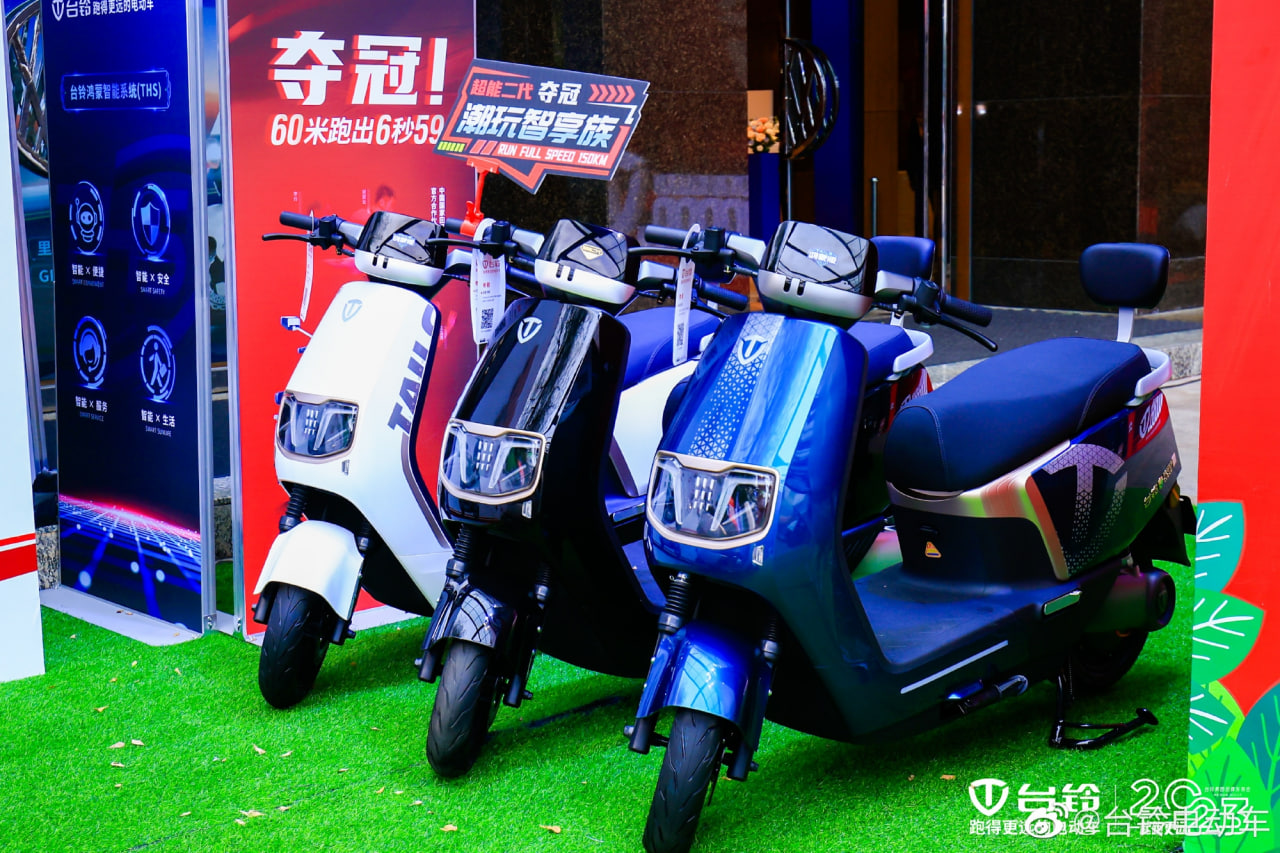
(via – Sina Tech)
HarmonyOS
HarmonyOS 3.1 Developer beta open for smartphone users
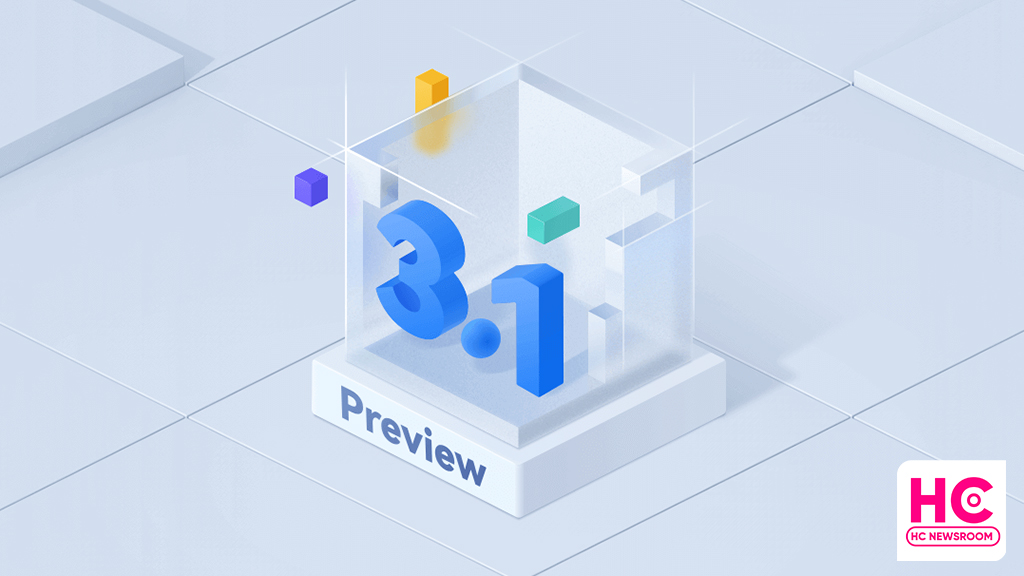
Today, HarmonyOS 3.1 developer preview testing is opened for smartphone users, this recruitment will enable developers to participate in the open beta activity with developer-only features directly into a real device.
According to the information, HarmonyOS 3.1 developer beta is currently being announced for the first phase of devices including Huawei P50 and P50 Pro. However, Huawei has confirmed to add more devices to the test pool later on. Also, a more friendly and subtle beta test is likely to begin in March.
To be mentioned, HarmonyOS 3.1 developer open beta recruitment is applicable until February 13, 2023. Afterward, Huawei will review the test applications. Selected testers will receive an email or SMS to download HarmonyOS 3.1 developer beta OTA rollout.
Also, this beta activity is available only for the Chinese models and only real authenticated accounts will pass the developer beta signup.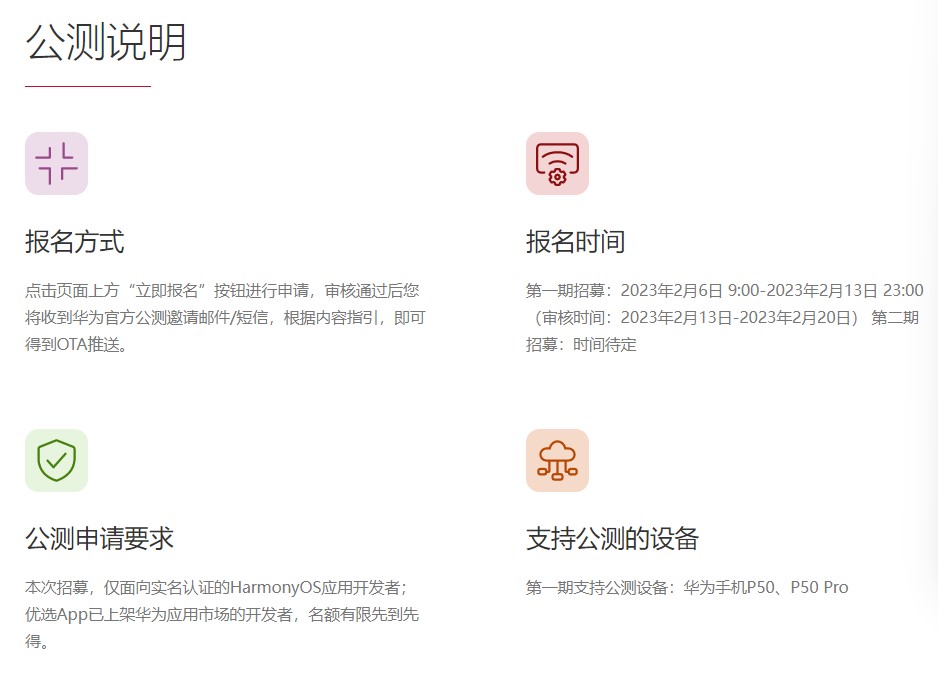
HarmonyOS 3.1 comes constructively adds a new ArkTS language, and with the latest public test, you will experience the improvements and efficiency of the app powered by ArkTS language, STage model, ArkUI, and more.
Below you can check the HarmonyOS 3.1 developer preview features:
- The ability framework adds a stage development model, including stage model life cycle management, scheduling, callback, context acquisition, authentication, and more. At the same time, the operation and management capabilities of the application are enhanced.
- The ArkUI development framework enhances the declarative Canvas/XComponent component capabilities, enhances component layout capabilities and state management capabilities, and optimizes the usability of some components.
- Application package management adds an interface for querying properties related to applications, ability, and ExtensionAbility.
- The common basic class library supports Buffer binary reading and writing.
- Web services add support for document preview and basic editing functions of document-type web applications, as well as cookie management and storage management.
- Added support for YUV, webp image codec, and other capabilities for graphics and images. Added native vsync capabilities, and supports self-drawing engines to independently control the rendering rhythm.
- Added camera configuration and preview functions in Media Services.
- The window service adds window-related interfaces under the Stage model, which enhances the window rotation capability and enhances the avoidance area query capability.
- The globalization service has newly added support for internationalization enhancement capabilities such as time zone lists, transliteration, and phone number attribution.
- The basic capabilities of common events are enhanced, and the commonEvent module is changed to commonEventManager.
- The resource management service adds a synchronization interface for resource acquisition, a new interface for querying resource values based on names, a new interface for querying number and float resource types, and a new way for Stage model resource query.
- Input method service adds input method cursor direction constant.

Android
First Android 14 Developer Beta announced, launch around HarmonyOS 4
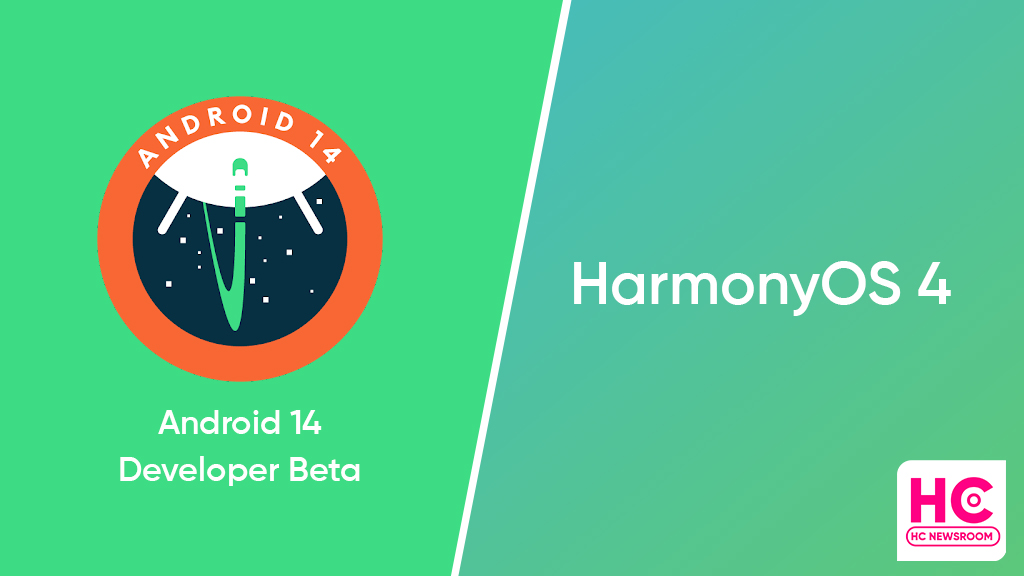
Android 14 is the next software version for the Android ecosystem. On February 8, Google stepped ahead to begin the development of this major upgrade with the first developer beta.
Google has released the roadmap for the development, beta testing, platform stability, and the final release of Android 14, which reveals meet the launch of Huawei HarmonyOS 4 later in the second half of 2023.
The first developer preview is already out for the Pixel devices. However, Google could open early access to other smartphone makers such as OnePlus by April when the open beta campaign kicks off.
As mentioned by the Android company, Android 14 is projected to reach platform stability by the end of July. But there’s still a possibility of these milestone timelines to delay, similar to last year.
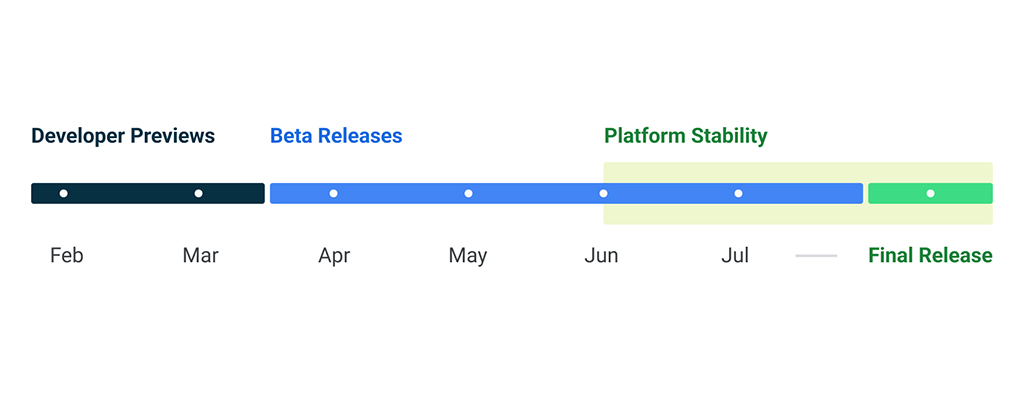
For your information, the Android 14 developer preview will be a very useful and early gift to the developer community. It will pave a way for the app devs to know more about the upcoming APIs and app features ahead of the final launch.
Looking into the developer preview features, Android 14 promises to improve productivity, enhances performance, improvements to security, and privacy, and bring new customizations.
Yes, there are new tweaks and changes made over Android 12, while there are more that will be visible as the development progress further. Throughout this phase, these developers (and later users) will help to fix bugs and make improvements to the Android 14 source code.
HarmonyOS 4:
Aside from the Android 14 developer beta, Huawei is preparing for the HarmonyOS 3.1 rollout but the company is working on HarmonyOS 4 as a major release for the next generation of Huawei devices. For now, there’s no official launch date available but we are likely to hear more on this at the Huawei Developer Conference (HDC) 2023 event.
HarmonyOS 4 promises big upgrades over HarmonyOS 3 and a major restructure in the user interface (UI). Nonetheless, we’ll keep you posted.

(source – Android)






